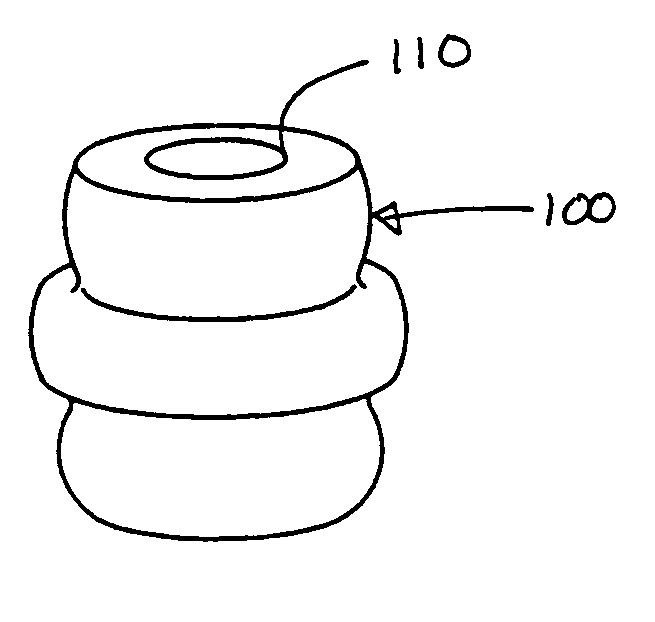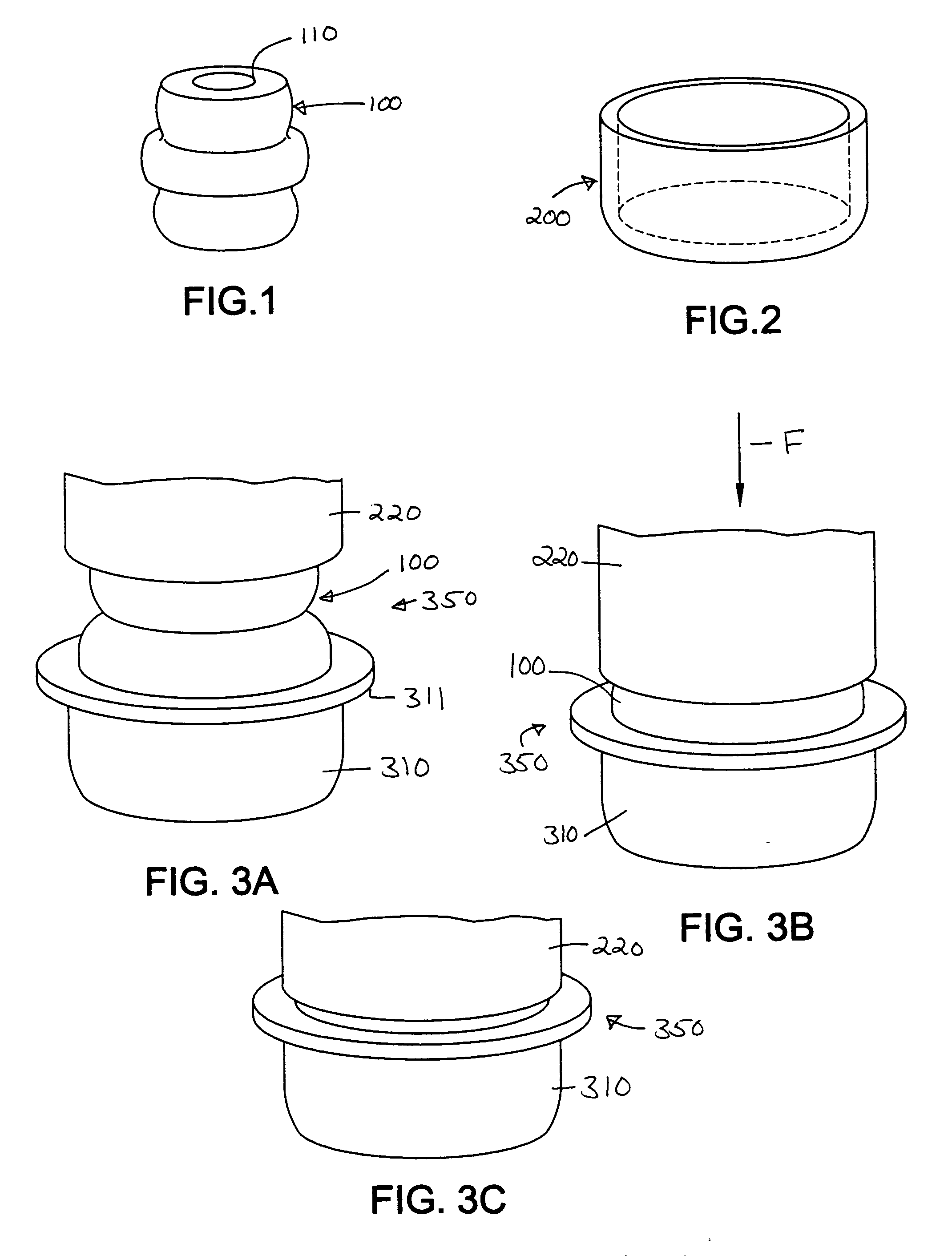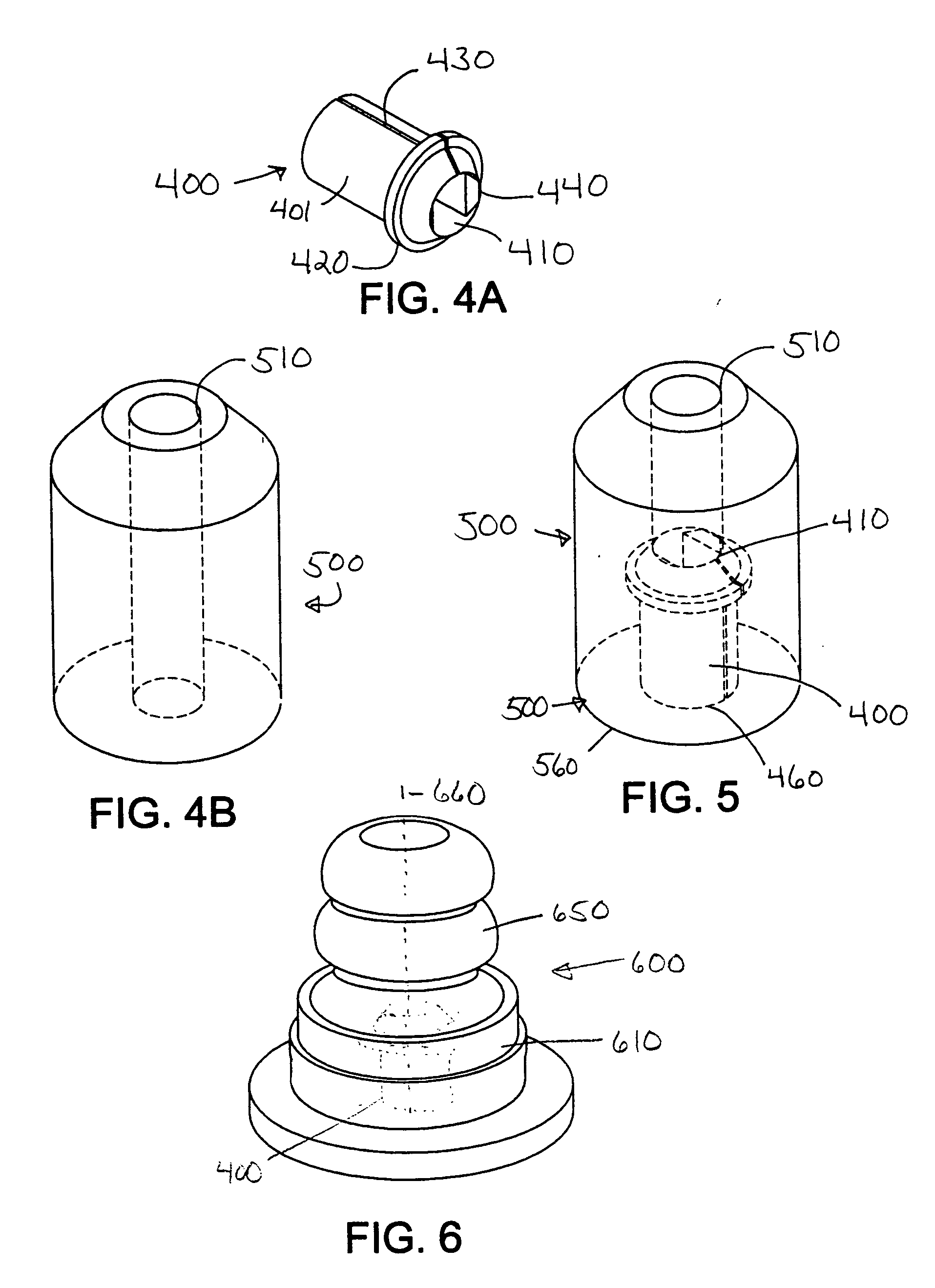Jounce bumper
a bumper and jig technology, applied in the field of jigs, can solve the problems of not providing a positive stop to the system, not enough space to package a bumper, etc., and achieve the effect of increasing the bumper rate, increasing the amount of energy, and increasing the bumper ra
- Summary
- Abstract
- Description
- Claims
- Application Information
AI Technical Summary
Benefits of technology
Problems solved by technology
Method used
Image
Examples
first embodiment
[0023] A parts view of the jounce bumper assembly according to the invention is shown in FIGS. 4A and 4B and the assembled view is shown in FIG. 5. The same reference numerals will be used for the same parts in different views. The insert is shown in FIG. 4A. As shown, the insert 400 generally comprises a cylindrical shape having a longitudinal hole 410 that has a diameter D along its length thereof. An annular flange portion 420 is provided around the outer surface 401 of the insert 400. The flange 420 is shown near an upper side 440, however, it may be at any position along the length of the insert 400. Its use and operation will be described below. The insert 400 may also have a slit 430 along its length thereof to allow for expansion of the diameter of the hole 410. The insert 400 may also have flat sides 450 along the inner surface of the hole 410, which can be used in operation to prevent the insert from rotating about a shaft on which it may be mounted. However, these surface...
second embodiment
[0030] a bumper assembly 600 according to the invention is shown in FIG. 6, wherein the combination of a bumper 650 having an insert 400 mounted therein is partially inserted into a cup 610. The cup may be either a metal or a plastic cup. For purposes of this embodiment a thermoplastic urethane (TPU) cup was used. Such material is well known as described above. The cup 610 generally has a cavity 611 along its central axis for receiving a portion of the bumper 650, as shown.
[0031] The placement of bumper assembly 600 between objects 710 and 720, as shown in FIG. 8A, provides similar actions, but different results because of the cup 610. As shown in FIG. 8B, a force acts upon object 720 in the direction F towards object 710. This begins to compress bumper 650 into the cavity 611 of the cup 610. As the force continually compresses the bumper 650, the bumper begins to expand slightly outward from its longitudinal axis 660 and inward toward the axis. As the bumper 650 compresses around t...
third embodiment
[0032] As a third embodiment to that shown in FIGS. 6, 8A-C, the cup could be made of metal or a non-flexible plastic or other material. This would have the effect of completely resisting the outward expansion of the bumper 650, but would otherwise operate in a similar manner. The reduction in the outward expansion of the bumper 650 as a result of the rigid cup and the use of the insert 400 has the effect of reducing the overall compression of the bumper assembly in comparison with the bumper assembly 650 having a flexible cup 610.
[0033] A comparison of various combinations of bumpers, inserts and cups is illustrated in FIG. 10. The graph shows a how much the bumper assembly will compress under a force of 10,000N. Four bumper assemblies were compared, a bumper with no insert, a bumper with an insert, a bumper mounted inside a rigid cup and a bumper with an insert mounted inside the cup. For each assembly, a similar bumper was used, as well as a similar insert and similar cup.
[0034]...
PUM
 Login to View More
Login to View More Abstract
Description
Claims
Application Information
 Login to View More
Login to View More - R&D
- Intellectual Property
- Life Sciences
- Materials
- Tech Scout
- Unparalleled Data Quality
- Higher Quality Content
- 60% Fewer Hallucinations
Browse by: Latest US Patents, China's latest patents, Technical Efficacy Thesaurus, Application Domain, Technology Topic, Popular Technical Reports.
© 2025 PatSnap. All rights reserved.Legal|Privacy policy|Modern Slavery Act Transparency Statement|Sitemap|About US| Contact US: help@patsnap.com



